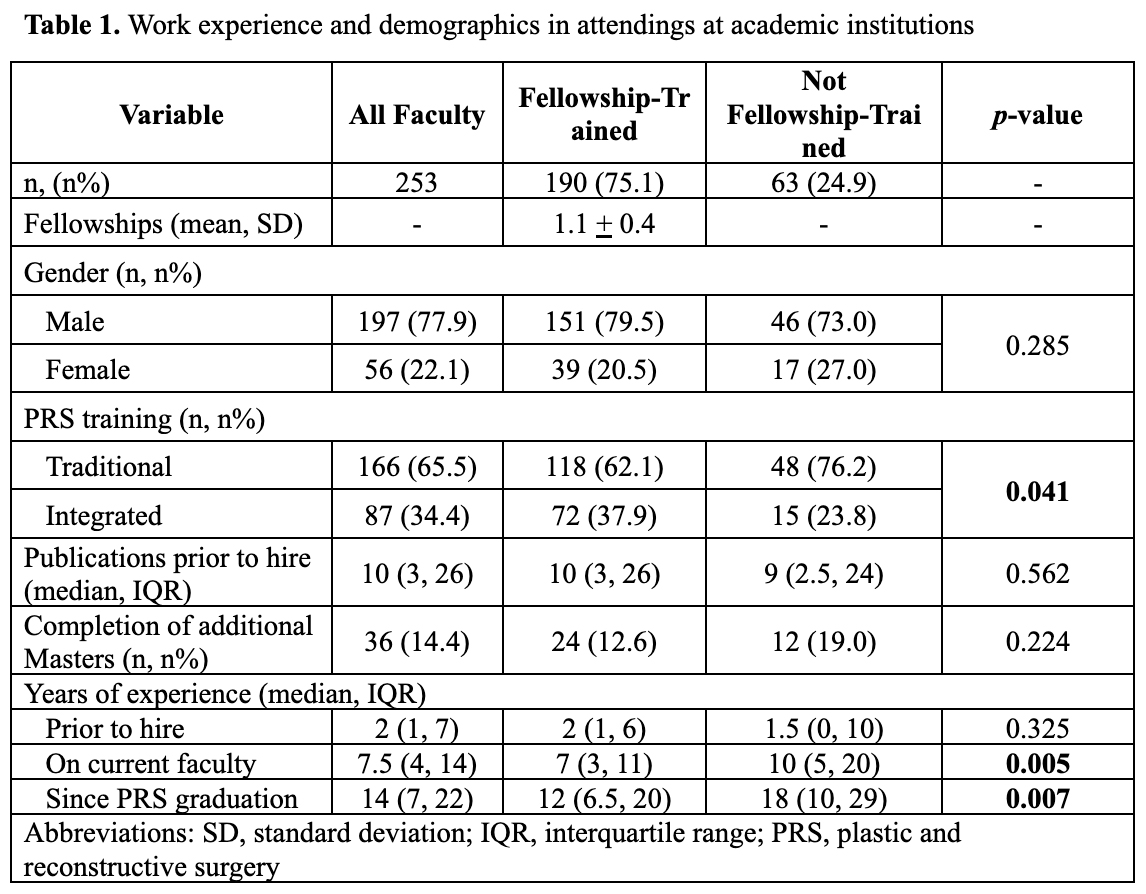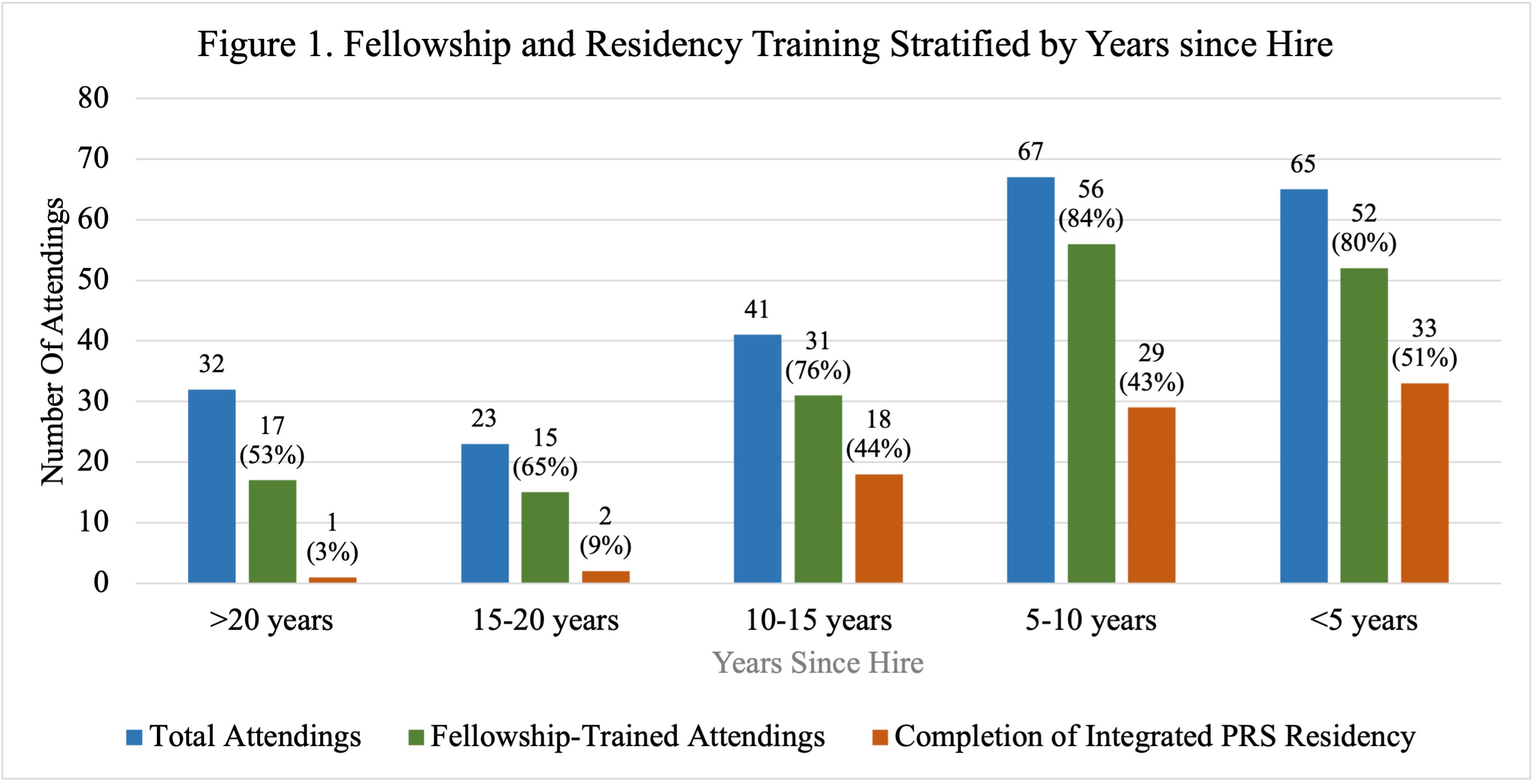Trends in Fellowship Training in Northeastern Plastic and Reconstructive Surgery Academic Faculty
ZoŽ K. Haffner, BS1, Adaah A. Sayyed, BS 1, John Bovill, BS2, Areeg A. Abu El Hawa, BS2, Samuel Huffman, BS2, Robert P. Slamin, MD1, David H. Song, MD, MBA1, Karen K. Evans, MD1
1Department of Plastic and Reconstructive Surgery, MedStar Georgetown University Hospital, Washington, DC; 2Georgetown University School of Medicine, Washington, DC
BACKGROUND: At completion of Plastic and Reconstructive Surgery (PRS) training, the ability to pursue an academic appointment remains a challenge for many prospective candidates. As faculty positions become increasingly competitive, we sought to explore factors that may play a role in appointment for an academic position.
METHODS: PRS faculty at academic institutions associated with the Northeastern Society of Plastic Surgeons (NESPS) were reviewed. Data collection included review of program websites, Doximity profiles, LinkedIn, and PubMed. Only those who completed traditional PRS training or integrated PRS residencies were included. Variables collected included integrated vs. traditional training, years since graduation from PRS residency or PRS fellowship, number of fellowships, gender, number of years on faculty at current institution, and number of publications prior to hire. Years of experience prior to appointment at current institution was calculated based on years since PRS graduation. Association between variables were analyzed using chi-squared and the Mann-Whitney U test. Trends in percentage of faculty with integrated residencies and those with fellowship training over time were also collected.
RESULTS: We identified 281 PRS academic faculty, of which 253 met inclusion criteria. The academic faculty were predominantly male, with only 22.1% of academic faculty identifying as female (Table 1). 190 (75.1%) faculty members completed at least one fellowship prior to being hired at their current institution, 20 (10.5%) of which had completed two or more fellowships. Compared to fellowship-trained faculty, those without prior fellowship training were significantly more likely to have had more years of experience, both on current faculty (median 10 years, p=0.005) and overall (median 18 years, p=0.007). No significant difference was found in regards to gender, years of experience prior to hire, number of prior publications, or completion of another degree. Proportion of fellowship-trained attendings hired and those who completed an integrated residency showed an overall increase in both of these parameters over time (Figure 1).
CONCLUSION: Our results show that there is a large and increasing proportion of fellowship-trained PRS surgeons hired to academic faculty positions in the Northeast over time. Additionally, the proportion of these surgeons who have completed an integrated program has also grown, correlating with the increasing availability of such programs over the last 20 years. Of note, female faculty represented only 22.1% of academic faculty overall, though this was not correlated with completion of fellowship training. These trends demonstrate the increasing demand for highly trained and specialized physicians upon academic appointment.
Back to 2022 Abstracts


